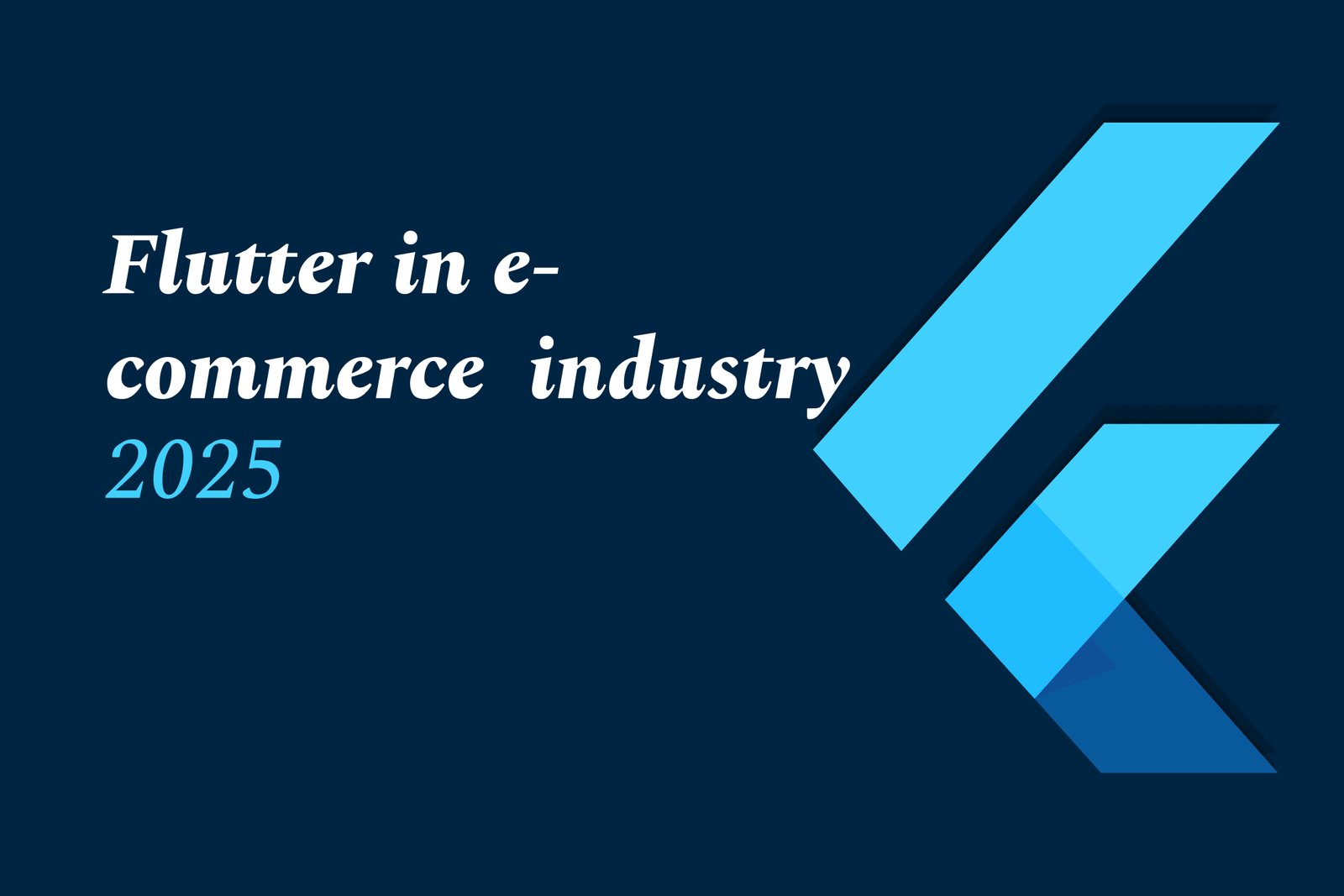Flutter in E-Commerce Industry 2025
In 2025, Flutter powers the e-commerce industry by enabling rapid, cost-effective development of high-performance, cross-platform apps. Its rich UI, unified codebase, and tools like FlutterFlow streamline building scalable multi-vendor marketplaces, revolutionizing online retail experiences.
Flutter in e commerce industry 2025
1 ) Introduction to Flutter in E commerce
Flutter, an open source SDK by Google, is revolutionizing e commerce app development in 2025 due to its efficiency in building cross platform apps with a single codebase. It enables rapid development, cost effectiveness, and smooth user experiences for both mobile and web applications.
2 ) Why Flutter is Ideal for E commerce
Unified Codebase: Develop once and deploy on multiple platforms (iOS, Android, Web), drastically reducing development time and maintenance costs.
Rapid MVP Development: Flutter is perfect for startups and growing businesses to swiftly launch MVPs, gather customer feedback, and iterate faster.
Rich UI and Performance: Provides smooth animations and highly customizable UI which boost user engagement and satisfaction.
3 ) FlutterFlow: Visual Development for E commerce
FlutterFlow, a no code/low code visual development platform based on Flutter, is gaining traction for building sophisticated multi vendor e commerce marketplaces like Amazon clones. Advantages include:
Drag and drop design with integrated backend logic.
Pre built templates for user auth, product listings, payment workflows.
Accelerated time to market, allowing apps to launch in weeks instead of months.
4 ) Multi vendor Marketplace Features Enabled by Flutter
Key functionalities essential for a competitive marketplace platform include:
Multiple user roles (vendors, customers, admins).
Product catalogs with categories and filters.
Vendor dashboards for inventory and order management.
Integrated checkout with payment gateways and delivery options.
Flutter’s flexible architecture supports multi vendor scenarios efficiently, fostering business scalability and diversified product offerings.
5 ) Flutter’s Impact on Cost and Speed of Development
Traditional e commerce platform development often demands 9 12 months and large budgets (> $100,000 ). Flutter and FlutterFlow dramatically reduce these timelines to 6 10 weeks for MVP launch and substantially lower costs. This speed advantage enables businesses to capitalize on market trends quickly and stay competitive.
6 ) Real World Adoption and Industry Momentum
Major enterprises like Airbnb, Uber, Alibaba, eBay, and startups alike utilize Flutter for building scalable, performant apps. Also, companies like Flutterwave have launched e commerce marketplaces to support SMEs with Flutter based solutions, highlighting industry confidence in this technology.
7 ) Emerging Trends Enhanced by Flutter in E commerce 2025
Integration with AI powered tools and personalization to enhance shopping experiences.
Support for quick commerce models emphasizing fast delivery.
Flexible payment and checkout options facilitated by Flutter’s extensibility.
Sustainability and social commerce trends are increasingly supported through Flutter’s adaptable platform capabilities.
Conclusion
Flutter stands as a pivotal technology shaping the e commerce industry's future in 2025. By combining rapid development, cost efficiency, and powerful multi platform UI capabilities, Flutter empowers businesses to launch innovative, scalable e commerce marketplaces that rival global leaders—making it a smart, strategic choice for developers and entrepreneurs aiming for success in the digital retail space.
https://justacademy.in/news-detail/flutter-4.0-release-date-and-roadmap
https://justacademy.in/news-detail/handling-user-input-in-flutter
https://justacademy.in/news-detail/flutter-global-summit-updates
https://justacademy.in/news-detail/performance-testing-in-flutter-4.0
https://justacademy.in/news-detail/flutterflow-and-low-code-revolution-in-2025
Related Posts
In 2025, top Angular libraries offer modern, feature-rich components and tools for building dynamic web apps. From powerful data grids to low-code platforms like UI Bakery, these libraries enhance development speed, UI design, and scalability, making them essential for Angular developers.
Migrating from AngularJS to Angular 17 involves gradually upgrading your app by running both frameworks together using tools like ngUpgrade, rewriting components in TypeScript, and adopting Angular’s modern architecture to enhance performance, maintainability, and long-term support.
Angular state management tools help organize and handle app data efficiently, improving scalability and maintainability. Popular options include NgRx for robust, RxJS-based patterns, and newer Signal Store solutions that offer simpler, reactive approaches integrated tightly with Angular’s latest features.
RxJS in Angular empowers developers to manage asynchronous data streams with powerful operators like `forkJoin`, `combineLatest`, and `zip`. Mastering these key operators in 2025 is essential for building efficient, reactive applications that handle complex event sequences seamlessly.
Angular performance optimization in 2025 focuses on improving app speed and responsiveness by using techniques like OnPush change detection, lazy loading, efficient data caching, and AOT compilation. These practices reduce load times, enhance user experience, and ensure scalable, fast Angular applications.
In 2025, Angular remains preferred for large-scale, enterprise apps with its robust, all-in-one framework, while Vue attracts developers seeking simplicity and fast development for smaller projects. Both frameworks excel, with choice driven by project needs and team expertise.
Angular Signals are a new reactive primitive in Angular 16 that enable fine-grained, efficient change detection by automatically tracking dependencies and updating only affected parts of the UI. They simplify state management and boost app performance, revolutionizing Angular's reactivity model.
Angular interview questions to prepare in 2025 focus on core concepts like components, directives, data binding, routing, and dependency injection, along with TypeScript mastery and latest Angular features to ensure strong practical knowledge for building scalable, efficient web applications.
AngularJS reached its official end of support in January 2022, meaning no further updates or security patches. To ensure app security and performance, developers should consider migrating to modern Angular versions or seek third-party long-term support options if immediate migration isn’t possible.
The Angular Roadmap 2025 highlights upcoming features focused on improving developer experience and performance, including zoneless Angular, Signals integration, enhanced Forms, async data handling, improved HMR, and expanded Angular Material/CDK enhancements, driving modern, efficient web app development.










